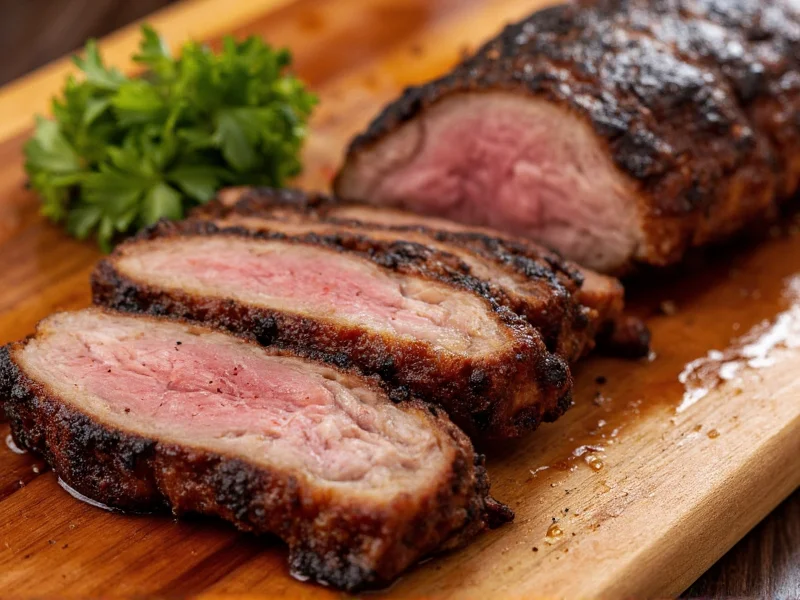Many home cooks and even experienced grill masters occasionally wonder: is short rib pork or does it come from another animal? The straightforward answer is that short ribs are exclusively a beef cut. Understanding this distinction is crucial for proper meal planning and cooking.
What Exactly Are Short Ribs?
Short ribs come from the lower portion of a cow's rib cage, specifically from the brisket or plate section. These meaty ribs contain more marbling than traditional rib cuts, which makes them exceptionally flavorful when cooked properly. The "short" in their name refers to the shorter length of the bone compared to back ribs, not to the animal they come from.
Why the Confusion Between Pork and Beef Ribs?
The confusion around are short ribs pork or beef stems from how meat is labeled in grocery stores and restaurants. Both pork and beef have rib cuts, but they're marketed differently:
| Meat Type | Common Names | Location on Animal |
|---|---|---|
| Beef | Short ribs, plate ribs | Lower chest area (brisket/plate) |
| Pork | Baby back ribs, spare ribs | Upper rib cage |
Identifying Beef Short Ribs at the Store
When shopping for short ribs, look for these characteristics that distinguish them from pork ribs:
- Size: Beef short ribs are larger and meatier than pork ribs
- Color: Raw beef short ribs have a deep red color compared to pork's lighter pink
- Labeling: Should clearly state "beef short ribs" or "plate ribs"
- Price: Typically more expensive per pound than pork ribs
Cooking Methods for Beef Short Ribs
Understanding what animal do short ribs come from matters for cooking because beef short ribs require different preparation than pork ribs. Their high collagen content means they benefit from slow, moist cooking methods:
- Braising: The most popular method, typically taking 2-3 hours
- Smoking: At low temperatures (225°F) for 5-6 hours
- Pressure cooking: Reduces cooking time significantly while maintaining tenderness
Unlike pork ribs which can be successfully grilled directly, beef short ribs need the extended cooking to break down their tougher connective tissues. This difference in beef short ribs vs pork ribs preparation explains why many recipes specifically call for one or the other.
Common Misconceptions About Short Ribs
Several myths persist about this cut of meat:
- Myth: Short ribs come from younger animals
Fact: The "short" refers to bone length, not animal age - Myth: All rib cuts are the same regardless of animal
Fact: difference between pork ribs and beef short ribs includes texture, fat content, and cooking requirements - Myth: Short ribs are a premium cut like ribeye
Fact: They're considered a more economical cut that transforms with proper cooking
Nutritional Profile of Beef Short Ribs
Compared to pork ribs, beef short ribs have a different nutritional profile that's worth considering:
- Higher in protein per serving
- Contains more iron and zinc
- Generally higher in saturated fat (though marbling contributes to flavor)
- Provides collagen when cooked properly, which converts to gelatin
Where to Find Authentic Short Ribs
If you're searching for where are short ribs located on the cow, they come from the front section below the back ribs. When purchasing, look for:
- Cut across the bone (flanken style) or along the bone (English cut)
- Good meat-to-bone ratio (at least 2-3 inches of meat)
- Fresh, bright red color with creamy white fat marbling
Many butchers can special-order short ribs if they're not regularly stocked. If you specifically need pork ribs, ask for baby back ribs or spare ribs to avoid confusion.
Final Clarification: Short Ribs Are Beef
To reiterate the most important point: short ribs are a beef cut, not pork. When you see "short ribs" on a menu or at the grocery store without specification, it always refers to beef. If a dish uses pork ribs, it will specifically mention "pork ribs," "baby back ribs," or "spare ribs." Understanding this distinction prevents meal planning mistakes and ensures you're preparing the meat using appropriate techniques for why are they called short ribs (referring to the beef cut's bone length).
Are short ribs pork or beef?
Short ribs are exclusively a beef cut, coming from the brisket or plate section of a cow. Despite the confusing name, they do not come from pigs. Pork ribs are labeled differently, such as baby back ribs or spare ribs.
Why are they called short ribs if they're beef?
The "short" refers to the length of the rib bone, not the animal they come from. Beef short ribs have shorter bones compared to back ribs, hence the name. This distinguishes them from longer rib cuts but doesn't indicate they come from a different animal.
Can I substitute pork ribs for beef short ribs in recipes?
Generally no, because pork ribs and beef short ribs have different textures, fat content, and cooking requirements. Beef short ribs require longer cooking times due to tougher connective tissues. Substituting could result in improperly cooked meat that's either too tough or overcooked.
How can I tell beef short ribs from pork ribs at the store?
Beef short ribs are larger, meatier, and have a deeper red color compared to pork ribs' lighter pink. They're typically labeled "beef short ribs" or "plate ribs." Pork ribs will be labeled as baby back ribs, spare ribs, or St. Louis style ribs. Beef short ribs also tend to be more expensive per pound.
What's the best cooking method for beef short ribs?
The best cooking methods for beef short ribs are slow, moist-heat techniques like braising, smoking, or pressure cooking. These methods break down the tough connective tissues, resulting in tender, flavorful meat. Typical cooking times range from 2-3 hours for braising to 5-6 hours for smoking at low temperatures.











 浙公网安备
33010002000092号
浙公网安备
33010002000092号 浙B2-20120091-4
浙B2-20120091-4